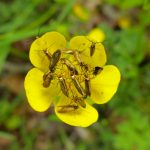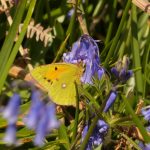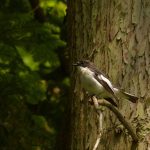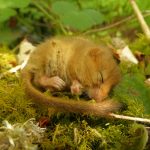Wildlife at Heathercombe
The Trustees are keen to conserve and extend the biodiversity of Heathercombe.
Heathercombe is part of what remains of the ‘Atlantic Woodlands’ (or the so-called ‘temperate rain forest’) of western Britain.This habitat is attributable to high rainfall, low atmospheric pollution and the dominance of certain vegetation, particularkly oak trees. In Heathercombe the habitat contains a great number and variety of species of plants (includng seven species of wild flower that are endangered or vulnerable), ferns (including one variety of male fern that has been identifed in only three other locations in the UK), mosses (which keep Heathercombe green even in winter!), liverworts, lichens (for which Heathercombe is particularly important) and fungi, as well as fauna such as insects, animals (including ‘vulnerable’ dormice) and certain rare and endangered bird species (including willow tits and pied flycatchers). One parcel of land having an especially important ‘wet woodland, and ‘rhos pasture’ habitat is designated as a County Wildlife Site in the Hurston to Vogwell Wet Valley System.
In 2006 the Trustees commissioned David Rogers, formerly a National Nature Reserve head ranger, to survey the fauna and flora, to help guide the management of the valley and to establish a ‘benchmark’ for the monitoring of future changes to the valley’s biodiversity. In 2022 a survey was commenced of the wild flowers, ferns, mosses, liverworts and lichens of Heathercombe to update David’s 2006 survey.
-
- Ecological survey of the Heathercombe Woodlands
- Plants
- Fungi
- Birds
- (Mammals)
- (Butterflies and Dragonflies)




